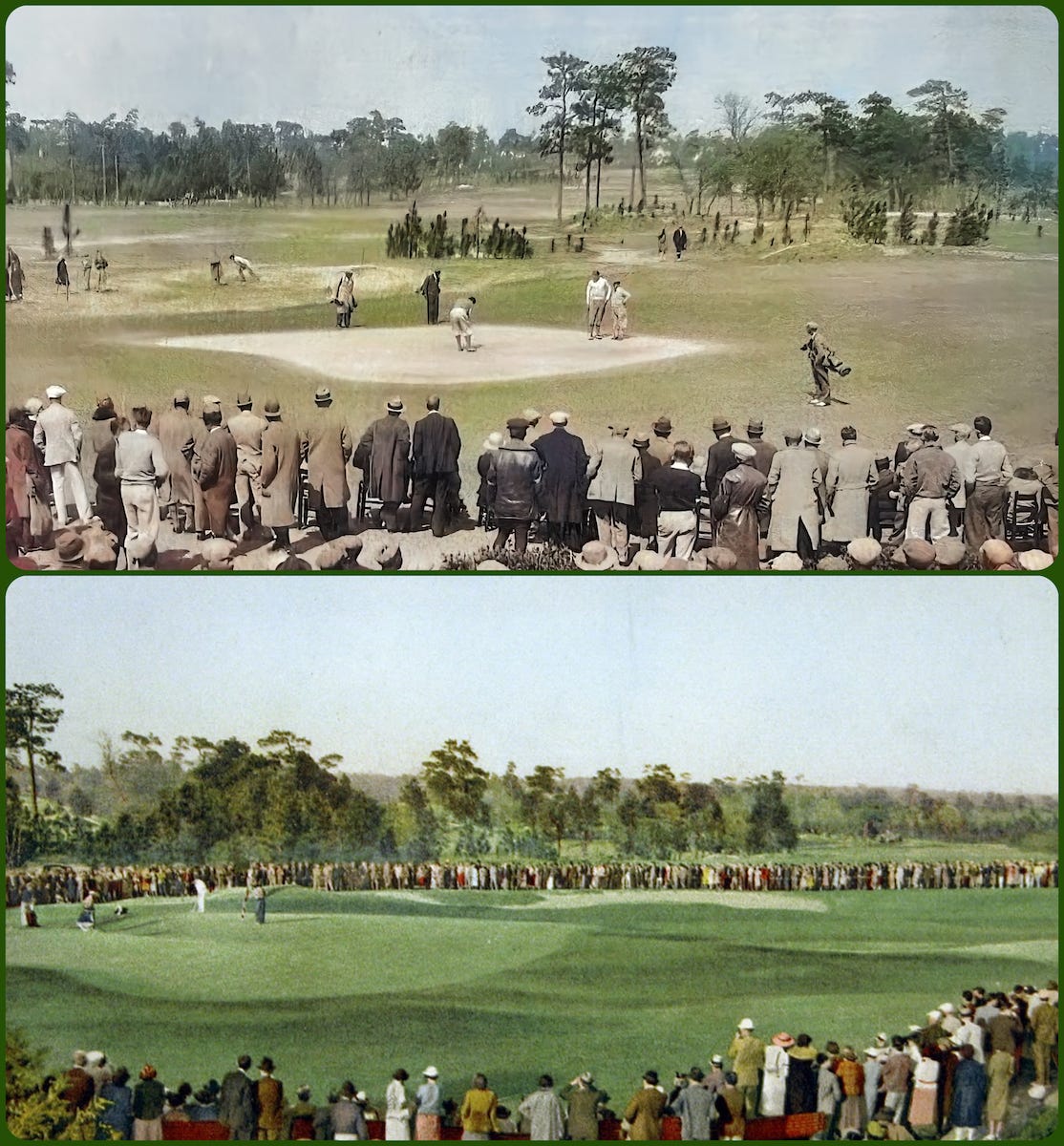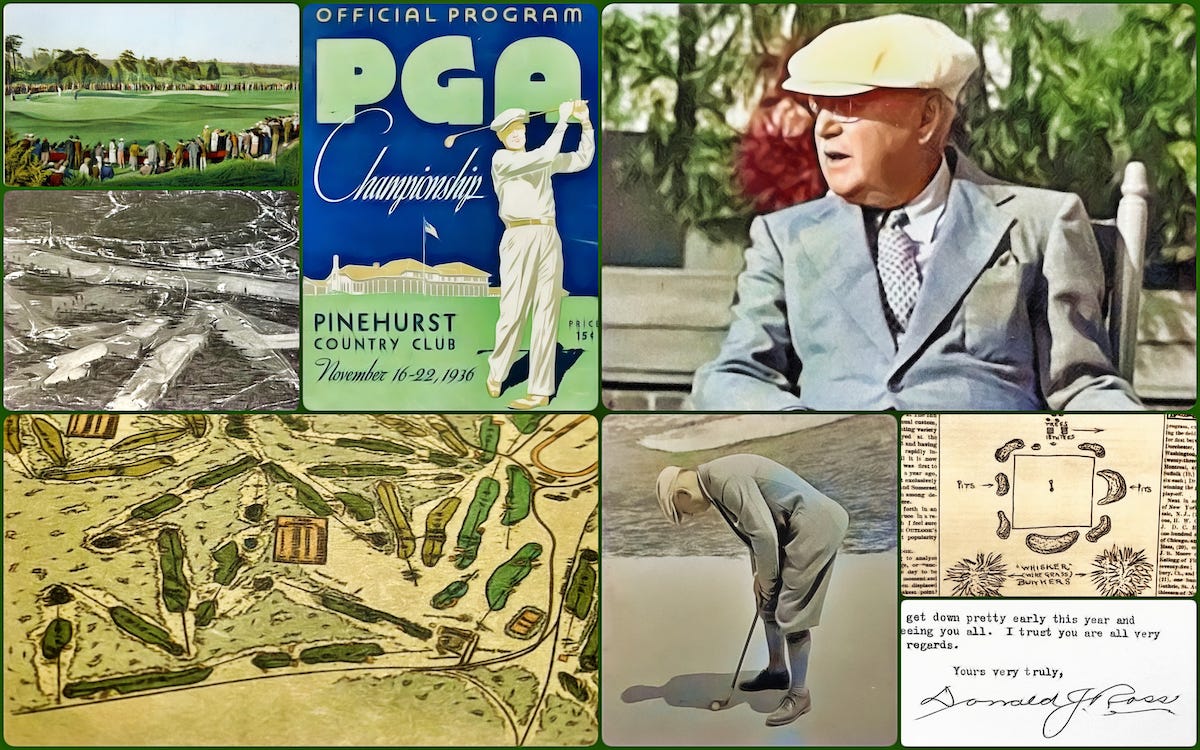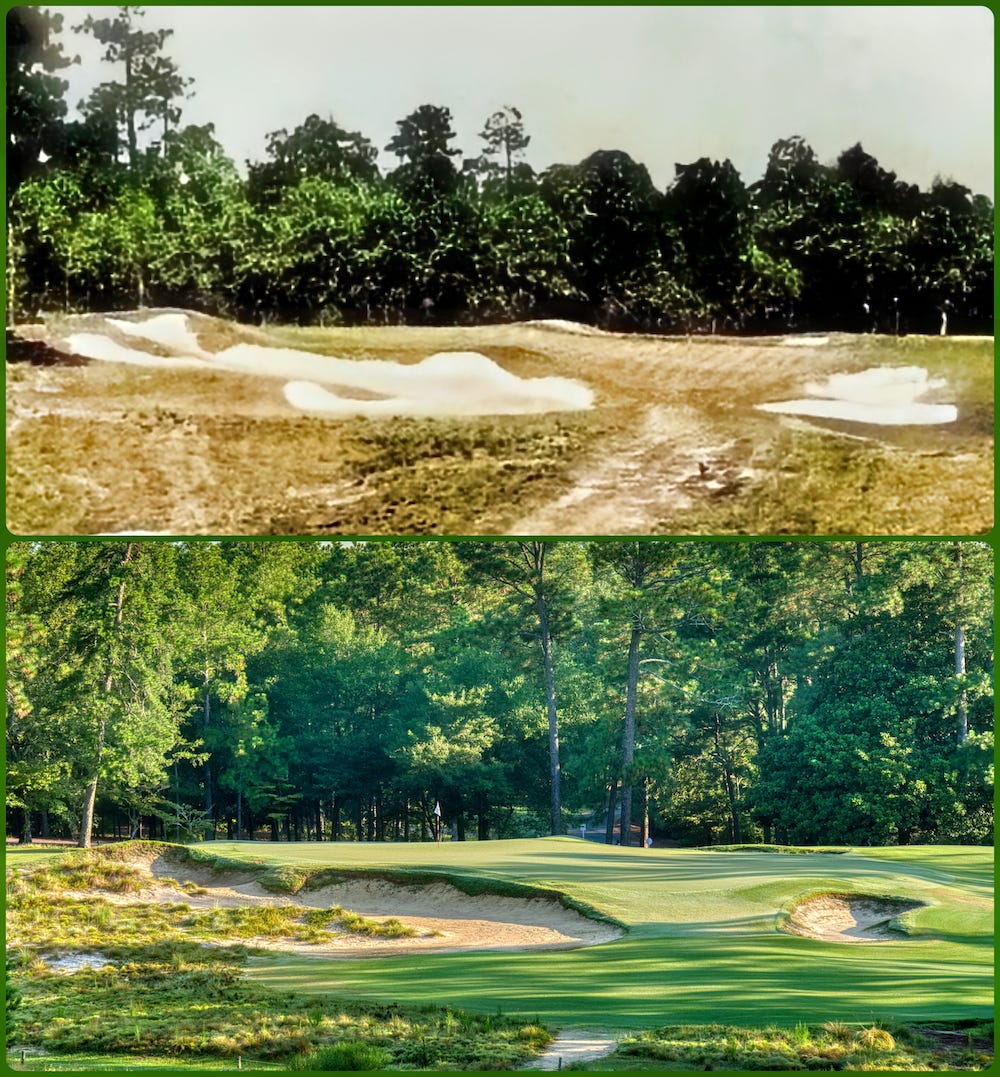Quad Questions With Donald Ross, Part 2
The architect explains key details of his approach to Pinehurst No. 2's design and the modifications made for major championship golf.
In today’s Part 2 the architect discusses elements of his Pinehurst design, readying the course for grass greens, and gets into specifics of the pre-1936 PGA Championship overhaul.
GS: What do you like most about the version of No. 2 you modified over forty years and soon hosting its fourth U.S. Open this week?
DR: Pinehurst No. 2 is the kind of course where every bunker could be removed and you'd never know. But I have evidence in my work at Pinehurst, that a course bunkered fairly and scientifically is the most attractive.
Bearing in mind that golf should be a pleasure and not a penance, it has always been my thought to present a test of the player's game—the severity of the test to be in direct ratio with his ability as a player. I carried out this thought in the changes made on No. 2.
GS: Is it true you installed longer tees and even took a little heat for having too many bunkers on No. 2?
DR: A large number of our very best golfing friends complained bitterly about what seemed to them very radical steps that we were taking. They predicted that it would be a course very little used. At the time, our No. 1 Course was rather easy and quite free from bunkers, and was not comparable in difficulty or as a test of
golf.
Before No. 2 was open, many days we were confronted with the problem of what regulations we could make to relieve the congestion resulting from the desertion of No. 1. This difficulty has been confronting us ever since. Those men who were so skeptical are now No. 2's strongest admirers.
GS: Well trolled. Did you enjoy the process of making Pinehurst resort better?
DR: Working the sandy soil raises dust all day. So, when I get home, I look and feel like a coal miner. If it wasn't for that ambition which seems to drive me on to make this a great golf center which no one can improve, I wouldn't bother about doing the work.
GS: Coal miner seems a tad strong but we’ll move on. Take us through the decision to convert the greens from sand to grass.
DR: Sand greens, which must be flat, seriously limit the architectural features of a golf course. Fortunately, as sand is the ideal soil for a golf course and at Pinehurst we had an especially suitable sandy soil, now we have fine putting surfaces available. We were also able to handle the greens and approaches in ways that would otherwise not have been possible, such as the creation of hollows and contouring that would present impossible drainage problems in anything but a natural sandy soil.

For thirty-five years we had been experimenting at Pinehurst with the problem of satisfactory grass surfaces for golf that would be suitable under our climatic and soil conditions. At first, it was a question only of fairways and many grasses tested until Bermudagrass was selected as the solution, then recently improved upon by adding ryegrass in the fall once a watering system for the fairways was installed.



